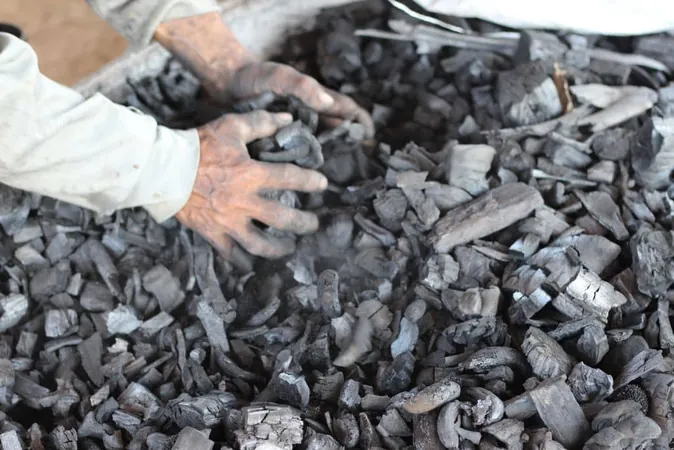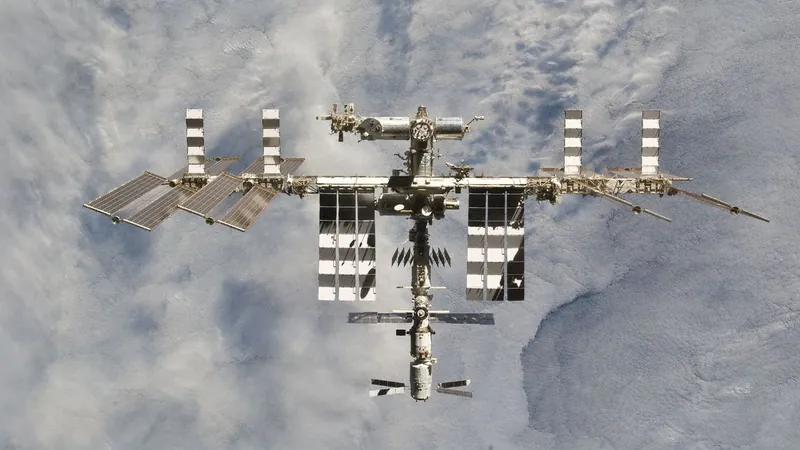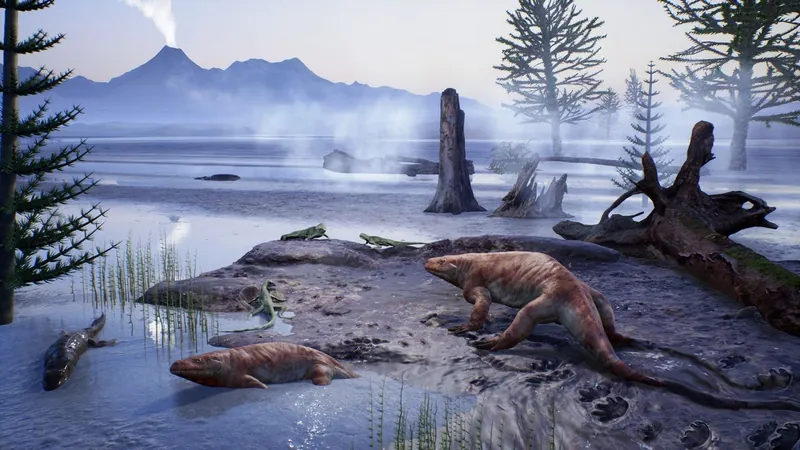
Unlocking the Power of Geobatteries: Nature's Secret Weapon Against Environmental Crisis?
2024-11-19
Author: Noah
Introduction
Researchers at Aarhus University have unearthed a fascinating phenomenon lurking beneath our feet: geobatteries, natural power banks hidden within our soil and water systems. These incredible natural structures function like tiny rechargeable batteries, helping us comprehend how soil responds to various environmental challenges.
What Are Geobatteries?
Geobatteries have the unique capability to power their surroundings by donating electrons, recharge themselves by absorbing electrons, and store energy for future use. A groundbreaking review published in July 2024 by PhD scholar Shihao Cui and his colleagues explores the intricate mechanisms and significance of these natural wonders, emphasizing their pivotal role in electron transfer within soil ecosystems. Their potential applications in combatting climate change and purging pollution from our environment are nothing short of remarkable.
The Science Behind Geobatteries
The chemical reactions at play in geobatteries mirror the processes that occur in our everyday electronics. When we charge our phones or laptops, one section of the battery is oxidized (loses electrons) to power the device, while another section is reduced (gains electrons). With geobatteries, however, continual environmental fluctuations—like changes in the water table—ensure that these natural batteries are always recharging.
Types of Geobatteries
These natural powerhouses contain specialized chemical groups that can either absorb or release electrons as needed. This capability facilitates energy transfer throughout the soil ecosystem, ensuring that energy reaches areas where it is most required.
The research team has identified several types of geobatteries. The first is natural organic matter, which includes decaying plant materials commonly found in peatlands. The second type is pyrogenic carbon, akin to charcoal, resulting from the incomplete combustion of organic materials—think biochar or ash from wildfires. Additionally, minerals like iron and manganese found in soil also serve as geobatteries. Surprisingly, even microplastics—tiny plastic particles that pollute our environment—can contribute to this electron transfer dynamic.
Benefits of Geobatteries
The benefits of geobatteries cannot be overstated. They enhance anaerobic digestion, accelerating waste breakdown to generate energy. By expediting the degradation of harmful substances such as pesticides, geobatteries are also invaluable in pollution cleanup efforts. Perhaps most intriguingly, their involvement in carbon dynamics could aid in the fight against climate change. They may enhance the sequestration of carbon in soil while potentially mitigating methane emissions, a greenhouse gas with a potency far exceeding carbon dioxide.
Influence of Water Levels
The functionality of geobatteries is significantly influenced by changes in water levels. Gaining insights into their behavior under fluctuating hydrological conditions can help scientists predict how ecosystems will respond to climate-induced phenomena like floods and droughts. Cui noted the criticality of this understanding in mitigating methane emissions from rewetted peatlands, where restoration efforts could inadvertently trigger these gases.
Exploration and Future Prospects
The discovery of geobatteries opens up a world of exciting possibilities for environmental management. Cui explained, “By understanding how geobatteries transfer electrons, we can optimize nutrient recycling, pollutant breakdown, and greenhouse gas emission reductions.” Fieldwork has revealed that not all soil components function equally as geobatteries. For instance, biochar persists longer in the soil and boasts a larger surface area than many mineral-based counterparts. Farmers are encouraged to integrate biochar into their soils to enhance fertility, retain moisture, and prevent erosion.
However, studying these natural systems poses challenges due to their complexity. Researchers are conducting field studies to monitor water levels in peatlands and rewet areas. These investigations aim to bridge the gap between lab-controlled experiments and real-world environmental conditions, offering a clearer picture of how geobatteries contribute to greenhouse gas dynamics.
Conclusion
Part of the EU-funded WET HORIZONS project, these field studies aim to enhance the protection and restoration of Europe's wetlands. Cui stated, “Understanding geobatteries is essential to unlocking secrets of wetland ecosystems and discovering innovative approaches to tackle climate change.” The future indeed looks promising as we explore the potential of these natural wonders. Could geobatteries hold the key to a sustainable ecological future? Stay tuned as the research unfolds!









 Brasil (PT)
Brasil (PT)
 Canada (EN)
Canada (EN)
 Chile (ES)
Chile (ES)
 España (ES)
España (ES)
 France (FR)
France (FR)
 Hong Kong (EN)
Hong Kong (EN)
 Italia (IT)
Italia (IT)
 日本 (JA)
日本 (JA)
 Magyarország (HU)
Magyarország (HU)
 Norge (NO)
Norge (NO)
 Polska (PL)
Polska (PL)
 Schweiz (DE)
Schweiz (DE)
 Singapore (EN)
Singapore (EN)
 Sverige (SV)
Sverige (SV)
 Suomi (FI)
Suomi (FI)
 Türkiye (TR)
Türkiye (TR)